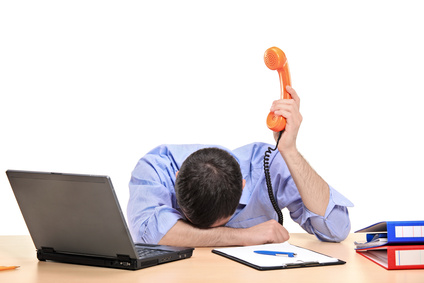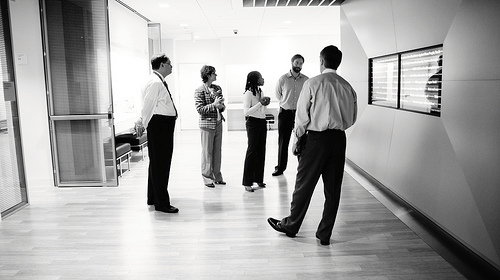
Physically demanding jobs aren’t the only professions that lead to sustaining serious injuries. Typing repeatedly at a keyboard and clicking a mouse can evolve from odd aches and pains into chronic injuries.
Small repetitive injuries can occur when people sit a desk and work with a computer all day, and these workers experience frequent pain in their eyes, neck, wrists, shoulders and back.
Unfortunately, workers get the bare minimum of breaks they deserve to prevent these injuries, and their bosses may make them feel like slackers when they take them. Fortunately, you can make a few adjustments to avoid the major causes of work-related accidents in offices.
Common Office Injury Causes
Repetitive strain injuries (RSIs) frequently occur in many jobs that require repetitive motions or sitting for prolonged periods in awkward positions. Activities that may seem inconsequential at first contribute to RSIs and possible disabling injuries, including the following.
- Sitting for long periods in an unnatural posture
- No time allowance for recovery
- Breathing shallowly
- Engaging in repetitive motions, such as typing with bent wrists, using the mouse and answering the phone
- Using pressure or force while typing, gripping the mouse or pinching pens
Emotional stress contributes to strain as well. When you get stressed out, your posture becomes unnatural, worsening pain and slowing or speeding your responses. Ergonomic technologies and equipment can help, but you must know how and why you’re using them. The best way to avoid the major causes of work-related accidents in offices is through prevention and risk reduction.
Reducing Risk for Injury in the Office
Start by being more aware of your body and environment. By taking a few preventive measures, you will greatly reduce the likelihood of facing one of the major causes of work-related accidents in offices.
- Sit naturally: What bad habits do you have when you concentrate? Most tuck their legs under the chair and slouch. Sit up with your back straight, feet flat on the floor and arms and legs at comfortable angles. Adjust where you feel strain.
- Lift properly: Lift with your legs, not your back. Stand with your legs shoulder-width apart and hold a strong stance with your lower body. As you lift the item, push up with your lower body.
- Type correctly: Speed and precision matter when you type, but don’t pound your fingers into the keyboard. Adding strain to a stressful repetitive motion can lead to and worsen carpal tunnel syndrome, which may require physical therapy or surgery to fix. Adjust your seat, so your arms naturally reach the keyboard, using a pad to support your wrists if necessary.
- Shift your viewpoint: When sitting at the computer, your eyes must naturally rest in the middle of the screen, and your viewpoint is wrong if you end up looking down. Move the monitor. Don’t crane your neck when looking over papers, either.
- Catch the mouse: Do you have to chase your mouse? Always keep it within a comfortable reach.
- Take breaks: You know you should be doing this, so do it — get up and move around for five minutes every hour, which will boost your productivity, too. Microbreaks also help when you can’t escape for five. Stop what you’re doing for a few seconds every 15 minutes or so to rest your eyes, wrists and hands from repetitive motions.
- Clean up: Office workers are at least twice as likely to experience a debilitating injury from a fall than those who work outside an office setting. Hazards include slipping on spills and tripping over misplaced objects. Properly clean up any spills, following company and product guidelines. Promptly place a marker where other can see the spill and clean it up, or find the appropriate person to address the issue.
Look for common trip, slip and spill issues like clutter, wet floors, unattended spills, exposed cords, uneven floors, loose rugs and items in pathways. Injuries also occur outside in inclement weather, such as ice, snow and rain, where slip hazards appear on ramps, walkways, parking lots, entrances and exits. Invest in nonslip runners to help prevent trips. Take time to organize your office area to make it safer and more productive.
- Put items away properly: Everything has a place — so place items where they should go every time. Arrange your office to prevent tripping, such as moving boxes out of walking paths and binding up loose cords.
- Speak up: Report issues to HR or maintenance and brush up on safety guidelines for your office. If you find a new issue that needs to be addressed, speak up regarding the problem. Asking for a movable display or providing your own wrist pad are small, but reasonable, adjustments.
Office injuries occur more frequently than you may think, and a simple fall or slip can be one of the major causes of work-related accidents in offices. By taking a few preventive measures, you’ll have more control over your office environment, time, productivity and comfort.




